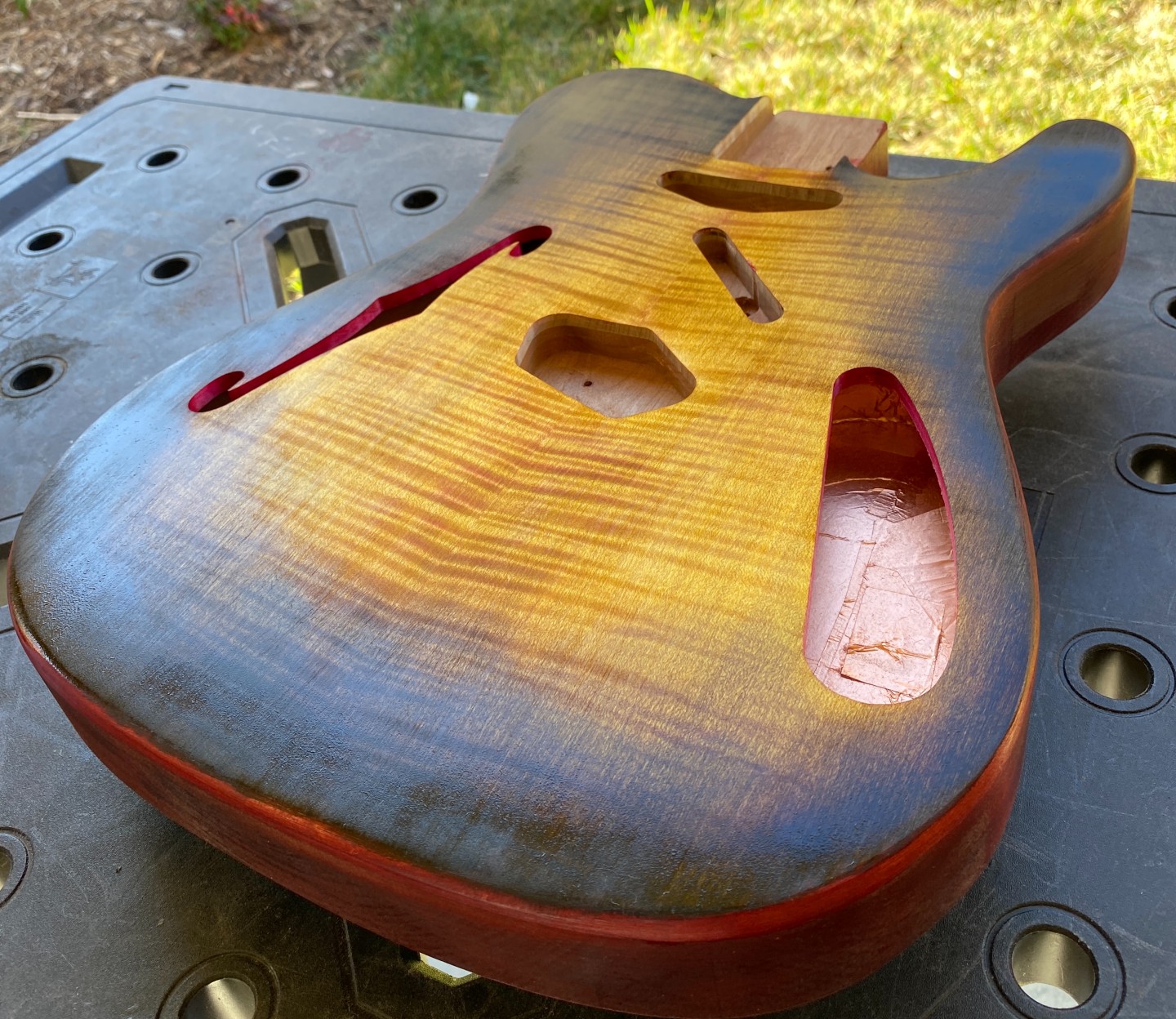No matter what style of guitar I’m building, the process is pretty similar. There are way too many steps to list here, but typically I start with boards of alder and maple and somehow end up with a guitar thankfully so far with all fingers still intact. I don’t use a CNC machine, so just about everything is shaped with a band saw, table saw, planer, router (with lots of different bits), random orbit sander, drum sander, chisels, and a Japanese Shinto rasp. A couple of jigs for the table saw and router are helpful too. I’ll also use a coping saw if I’m cutting f holes for the build.
As for the finish, I am a fan of Angelus leather dyes that I apply with a rag and steel wool if it is a burst pattern. I use Mohawk’s sanding sealer to lock in the colors and the last part with the clear coat is where I struggle the most. I don’t have an HVLP system but I’m not sure if it would make a difference to be honest. I’ve used Tru Oil, water-based polyurethane, and Crystalac Brite Tone, all applied by hand. They all have their own pros and cons but for a dyed/stained finish, the Brite Tone is probably the best choice. I try to stick with water-based clear coats though for safety and environmental reasons. For the neck, I use either Tru Oil (be careful of spontaneous combustion) or polymerized Tung Oil and finish sand up to 2,000 grit.
I press in frets using an arbor press and fret press caul and shape the neck using a Shinto rasp. I shape headstock thickness using a drum sander and use a drilling jig for the tuner holes. I level and crown the frets using a fret rocker and a fret file I got from Amazon and round the fret edges using a StewMac fret end dressing file. Oh and I use a fret beveling file to file the fret edges after they are pressed in.
The other part I really don’t enjoy is soldering electronics. I will either buy a pre-wired harness so I just need to solder in the pickups, or use the solderless pickups that GuitarFetish sells.
The final part after the actual build is the setup before the guitar is ready to play. I check the neck relief, intonate the guitar, adjust the nut, adjust string height, and adjust pickup height.
